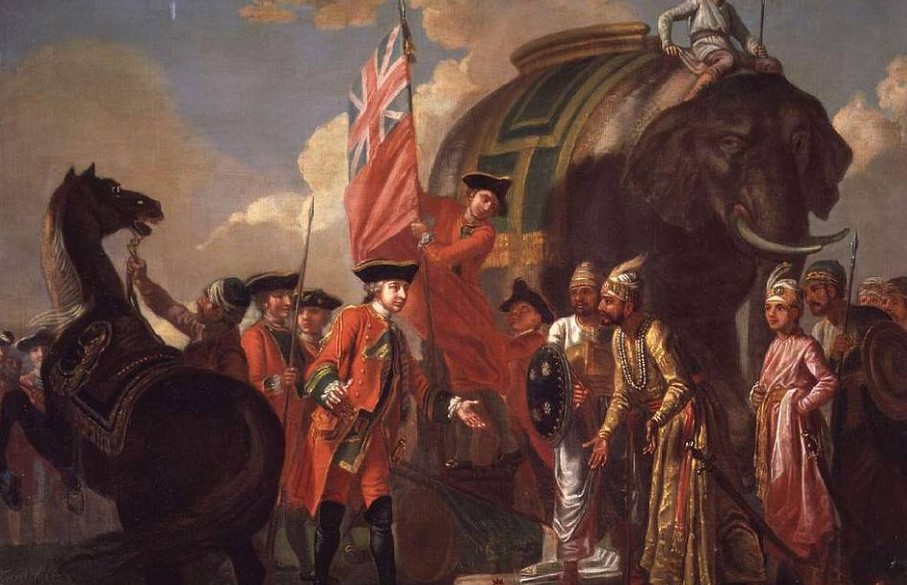
Modern History MCQs – 1 (Arrival of Europeans in India)
Most important multiple choice questions from the chapter – Arrival of Europeans in India MCQs.
Home » UPSC Study Materials » Prelims Express » Chapterwise MCQs » Modern History MCQs » Modern History MCQs – 19(Cabinet Mission and Formation of Constituent Assembly)
Cabinet Mission and Formation of Constituent Assembly MCQs with answers and explanations for UPSC and Other examinations.
1. Cabinet Mission was presided over by who among the following ?
(a) Lord Attlee
(b) Strafford Cripps
(c) Clement Attlee
(d) Sir P. Lawrence
Correct Answer – (d) Sir P. Lawrence
2. Consider the following statements about Cabinet Mission :
1. It proposed a three-tier polity for India.
2. There was no Indian member in the Cabinet Mission.
Which of the above statements is/are correct ?
(a) 1 only
(b) 2 only
(c) Both 1 & 2
(d) None of the above
Correct Answer – (c) Both 1 & 2
3. Consider the following statements about Cabinet Mission :
1. It recommended that the whole of India including the Princely states should form a Federation.
2. The Central Government should be in charge of foreign affairs, defense and communication.
Which of the above statements is/are correct ?
(a) 1 only
(b) 2 only
(c) Both 1 & 2
(d) None of the above
Correct Answer – (c) Both 1 & 2
4. Consider the following statements about Cabinet Mission :
1. It divided the all Indian provinces into four groups.
2. Punjab, North-West Frontier province, Sindh and Balochistan were kept in one group
Which of the above statements is/are correct ?
(a) 1 only
(b) 2 only
(c) Both 1 & 2
(d) None of the above
Correct Answer – (b) 2 only
5. Consider the following statements about Cabinet Mission :
1. It vested all residuary powers in the provinces.
2. It rejected Muslim League’s demand for a separate Pakistan.
Which of the above statements is/are correct ?
(a) 1 only
(b) 2 only
(c) Both 1 & 2
(d) None of the above
Correct Answer – (c) Both 1 & 2
6. Who was the President of the Indian National Congress during the visit of the Cabinet Mission to India ?
(a) Jawaharlal Nehru
(b) J.B. Kripalani
(c) Maulana Abul Kalam Azad
(d) Sarojini Naidu
Correct Answer – (c) Maulana Abul Kalam Azad
7. The Constituent Assembly to frame the Indian constitution was set up under the provision of which among the following ?
(a) Indian Independence Act
(b) Government of India Act, 1935
(c) Cripps Mission
(d) Cabinet Mission Plan
Correct Answer – (d) Cabinet Mission Plan
8. The first session of the Constituent Assembly was held on which among the following dates ?
(a) 16th August, 1947
(b) 26th January, 1948
(c) 9th December, 1946
(d) 26th November, 1946
Correct Answer – (c) 9th December, 1946
9. Who among the following was elected as the President of the Indian Constituent Assembly ?
(a) Dr. Rajendra Prasad
(c) Sardar Patel
(b) Pt. Jawaharlal Nehru
(d) Dr. B. R. Ambedkar
Correct Answer – (a) Dr. Rajendra Prasad
10. Who headed the Interim Government formed in 1946 ?
(a) Rajendra Prasad
(b) Jawaharlal Nehru
(c) Sardar Vallabhbhai Patel
(d) Rajagopalachari
Correct Answer – (b) Jawaharlal Nehru
11. Which among the following portfolios was held by Dr. Rajendra Prasad in the interim Government formed in 1946 ?
(a) Defense
(b) External Affairs
(c) Food and Agriculture
(d) Finance
Correct Answer – (c) Food and Agriculture
12. When the Indian Muslim League was included into the Interim Government in 1946, Liyaqat Ali Khan was assigned the Portfolio of which among the following ?
(a) Foreign Affairs
(b) Home
(c) Finance
(d) Defence
Correct Answer – (c) Finance
More questions are coming soon. Join us on Whatsapp for latest updates: Join CivilsCracker on Whatsapp

Most important multiple choice questions from the chapter – Arrival of Europeans in India MCQs.

Most important multiple choice questions from the chapter – Battle of Plassey and Battle of Buxar MCQs.

Most important multiple choice questions from the chapter – Social and Religious Reform Movements MCQs.

Most important multiple choice questions from the chapter – Anglo Mysore Wars and Anglo Maratha Wars MCQs.

Most important multiple choice questions from the chapter – Governor Generals of India MCQs.

Most important multiple choice questions from the chapter – Revolt of 1857 MCQs.

Most important multiple choice questions from the chapter – Organizations before Indian National Congress MCQs.

Most important multiple choice questions from the chapter – Important Sessions of Indian National Congress MCQs.

Most important multiple choice questions from the chapter – Partition of Bengal and Swadeshi Movement MCQs.

Most important multiple choice questions from the chapter – Surat Split and Lucknow Pact MCQs.

Most important multiple choice questions from the chapter – Arrival of Gandhi and Jallianwala Bagh Massacre MCQs.

Most important multiple choice questions from the chapter – Khilafat and Non Cooperation Movement MCQs.

Most important multiple choice questions from the chapter – Simon Commission and Nehru Report MCQs.

Most important multiple choice questions from the chapter – Civil Disobedience Movement MCQs.

Most important multiple choice questions from the chapter – Communal Award and Poona Pact MCQs.

Most important multiple choice questions from the chapter – Individual Satyagraha and Cripps Mission MCQs.

Most important multiple choice questions from the chapter – Quit India Movement MCQs.

Most important multiple choice questions from the chapter – Indian National Army and Royal Indian Navy Mutiny MCQs.

Most important multiple choice questions from the chapter – Independence and Partition of India MCQs.
We are adding new Notes, Chapterwise MCQs, Quizzes, Previous Years Questions everyday
We are adding new Notes, Chapterwise MCQs, Quizzes, Previous Years Questions everyday